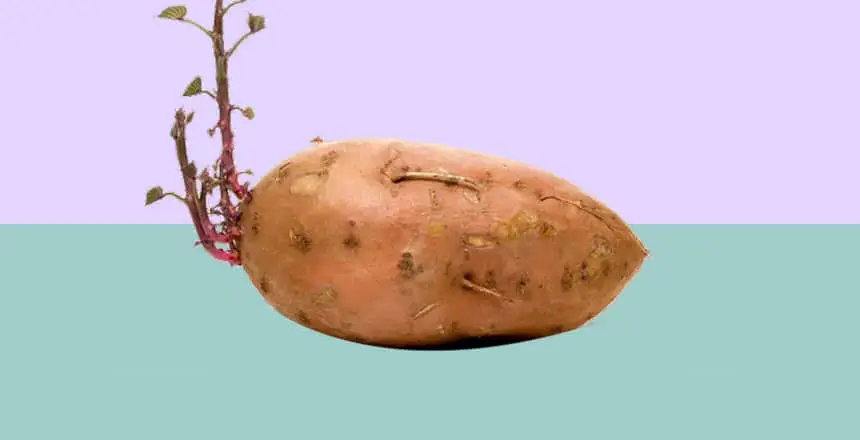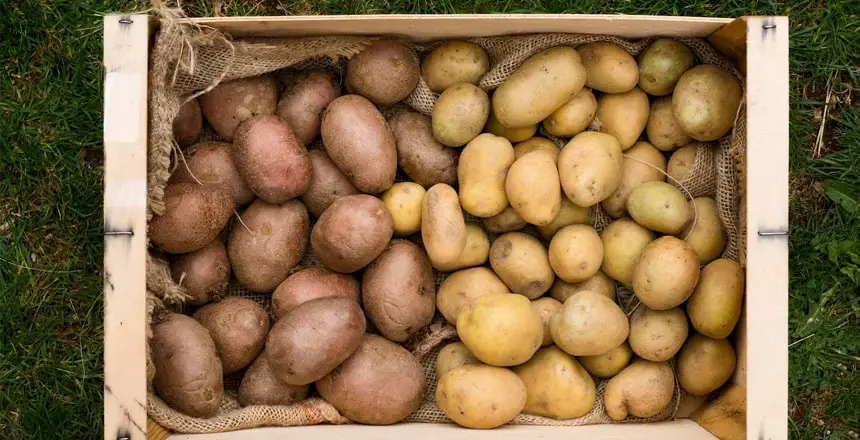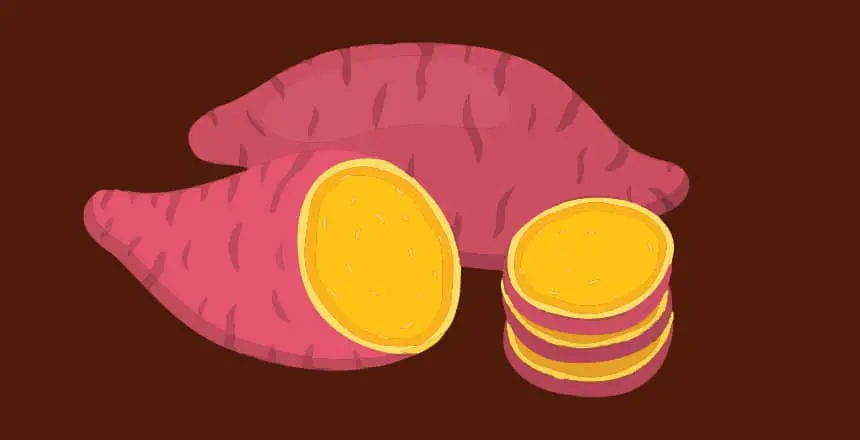Have you ever gotten excited to cook a dish with sweet potatoes, only to find they rotten? Before throwing them away, it’s important to know how to tell if a sweet potato is bad.
Today, we will discuss some key ways to determine whether or not it’s safe to eat the sweet potatoes in question. By learning more about what makes potatoes go bad and how long they usually stay fresh, you can ensure that your meals are always flavorful and safe.
Read on for our helpful guide on telling when there might still be life left in those spuds!
Contents
How Long Before Sweet Potato Goes Bad?

If stored properly, sweet potatoes can last for several weeks – even months. However, even when stored properly, sweet potatoes will eventually start to spoil. Generally speaking, they can stay fresh for up to three months in a cool and dry area – but this could vary depending on the variety of sweet potatoes you have.
So while it’s not always easy to tell exactly when a sweet potato has gone bad, there are some key signs you can look out for that’ll help you tell if it’s still safe to eat.
Pro Tip: You can extend the lifespan of sweet potatoes by wrapping them tightly in a sealed plastic bag and storing them in the refrigerator. This will help prevent mold or rot from setting in prematurely.
How to Tell If A Sweet Potato Is Bad?
When determining if sweet potatoes are still okay to eat, you should always pay attention to any visible changes in their appearance. Here are a few things to look out for:
- Bad smell – Sweet potatoes can start to give off a sour, ammonia-like smell when they start to go bad. This is usually the first warning sign that it’s time to throw them out!
- Discoloration – If you see any dark spots, brown spots, or discoloration on the surface of the sweet potato, it is likely gone bad and no longer edible.
- Soft and mushy – If the sweet potato is soft, squishy, or feels wet when you touch it, it’s probably gone bad.
- Mold – When sweet potatoes start to turn moldy, they’re no longer safe to eat. It’s important not to try and cut away any mold as this can spread bacteria across the surface of the potato and make it even more dangerous to eat.
- Sprouting – Sweet potatoes usually start to sprout when they’ve gone bad. If you notice any shoots or new growth on the sweet potato, then it’s likely too old and needs to be thrown out.
Although it’s not always easy to tell when a sweet potato has gone bad, following these key signs and a few simple steps can help you pick only the freshest and healthiest sweet potatoes around!
How to Store Potatoes the Right Way?

To ensure that your sweet potatoes stay fresh and safe to eat, there are a few simple steps you can take to prevent them from spoiling.
Raw Potatoes
When purchasing raw sweet potatoes, make sure to check them for any signs of spoilage and only buy the ones that look fresh.
Raw potatoes can keep for several months without spoiling when stored properly. The key is to store them in a cool and dry place, away from direct sunlight and any heat sources, with an ideal temperature range of 43-50°F (6-10°C).
To further extend the shelf life of sweet potatoes, it is important to keep them in a well-ventilated area such as found in cool cellars, basements, garages or sheds.
Cooked Potatoes
Cooked sweet potatoes can also be stored, but they won’t last nearly as long as raw sweet potatoes. Cooked potatoes should always be cooled to room temperature before being stored in the refrigerator. When refrigerated, cooked sweet potatoes can keep for up to 3-5 days and will stay fresher for longer if stored in an airtight container.
What Happens If You Eat A Bad Sweet Potato?
Eating a bad sweet potato can have serious consequences. Spoiled sweet potatoes can contain toxins that can cause food poisoning, which is why it’s so important to check them for any signs of spoilage before you purchase or consume them.
If you suspect that you may have eaten a bad sweet potato, contact your doctor immediately and follow their advice. Symptoms of food poisoning include nausea, vomiting, stomach cramps and diarrhea – so if you experience any of these symptoms it’s best to seek medical attention right away.
In conclusion, it’s always best to inspect a sweet potato for any signs of spoilage before eating it. Doing so can help you to avoid any potential health risks associated with eating bad sweet potatoes and keep your family safe!
FAQs
Can You Still Eat Sweet Potatoes that Have Sprouted?
No – it’s best to discard any sweet potatoes that have started to sprout. Sweet potatoes that have already gone bad will no longer be safe to eat and can potentially cause food poisoning if consumed.
Can You Freeze Raw Sweet Potatoes?
Yes – freezing raw sweet potatoes is an easy way to store them for longer periods of time. Simply peel, wash, and cut the sweet potatoes into cubes before placing them in a freezer-safe container or bag. Then, freeze them for up to 6-8 months. When you’re ready to use them, just defrost them and cook them as normal.
Can You Eat Sweet Potatoes that Have Gone Bad?
No – it’s best to discard any sweet potatoes that appear to have gone bad. Sweet potato deterioration can cause food poisoning and should not be consumed.
Are Old Sweet Potatoes Safe to Eat?
No – old sweet potatoes are no longer safe to eat. If a sweet potato is past its expiration date, appears to have gone bad, or is showing signs of age-related spoilage, then it needs to be discarded. It’s also important to check for any visible changes in the appearance of the sweet potatoes before consuming them. Eating old sweet potatoes can cause food poisoning and other health issues.
Is a Sweet Potato Bad If It’s White Inside?
No – white spots or discoloration on the surface of a sweet potato does not necessarily mean it has gone bad. However, if the sweet potato is soft, squishy or shows any signs of mold then it needs to be discarded immediately as it will no longer be safe to eat.
How do I Know If My Sweet Potatoes are Still Good?
To check if your sweet potatoes are still good, look for any signs of age-related spoilage, such as softness, discoloration, mold, or a sour smell. If the sweet potato is still firm and smells fresh, it should be safe to consume.
Bottom Line
Knowing how to tell if a sweet potato is bad is essential when cooking, as it can help you make sure you’re eating fresh, healthy produce. By looking out for signs like an overly pungent smell, brown spots, soft spots, or moldy appearance, you can pick out the freshest and healthiest sweet potatoes for your meals.
So, next time you go grocery shopping, take extra care to inspect your sweet potatoes before buying them – by doing so, you can ensure that they’re fresh and ready to use when the time comes!
